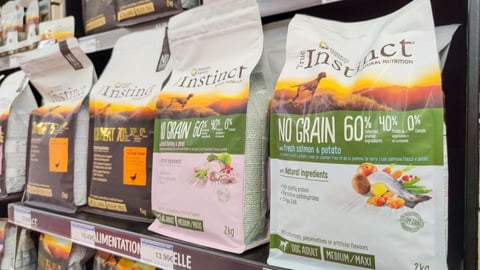Hanging In There: How CPGs Can Maintain Healthy Margins While Holding On to Empty Shelf Space
In only two years, retailing has changed significantly. The pandemic not only forced retailers to offer new channels for shopping and fulfillment, but the perfect storm of panic shopping and supply chain issues created waves that are still roiling today. Some estimates suggest that out-of-stock issues cost retailers nearly $82 billion in consumer packaged goods (CPG) sales in 2021 alone.
While both retailers and CPGs must contend with a completely unpredictable supply chain, inflation fears and pandemic fatigue for the foreseeable future, CPGs also face the added challenge of having limited influence over shelf allocation in stores. The best way for them to thread the needle is by having carefully analyzed data that can help strengthen their positions for keeping SKUs on the shelf, then collaborating with retailers to share how both they and the retailer keep shoppers engaged and margins healthy as a result.
CPGs Can Create Win-Win Margins for Themselves and Retailers
With estimates suggesting that it may take many months, if not years, for current supply chain issues to end, CPGs need to find a way to fill available space as best as possible while also holding on to short-term empty real estate for the future.
One way to create a win-win scenario for both sides’ margins is by using AI for shelf-planning. This allows CPG brands to develop cluster- and store-specific assortments and shelf layouts that ensure must-stock items are prioritized. This also will enable shoppers to have a consistent and localized experience at the shelf, ensuring the items and brands customers want will be available.
Helping Retailers’ Planning Efforts
Many retailers base their existing store clusters on traditional static information like store size, existing distribution networks, or some other historical approach – justifying that it’s better to keep things as-is than to change and risk unwanted side effects. Even in strained market conditions like today’s, some retailers still insist on doing things the old way or with outdated information.
This is one more area where AI can help CPGs retain shelf space. With AI-based clustering, CPG manufacturers can bring sales and consumer insights to retailers that more efficiently identify the optimal clusters at scale, driving greater customer loyalty and category lift, while CPGs see better margins and better sell-through with fewer out-of-stocks.
CPGs can also help retailers evaluate the impact of transferable demand on assortments and store forecasting. If a retailer assumes that shoppers for a CPG item will switch to a new private-label alternative instead and wants to reallocate shelf space to their own brand, then CPGs need the correct analytics to demonstrate that, for example, shoppers would instead switch to a different CPG brand or buy the item elsewhere.
With AI, CPGs can better understand and adjust to the potential impacts of transferable demand. This allows for various category-specific models tailored to different retailers’ business models. A CPG brand can retain shelf location by confidently identifying how much demand is truly lost when a product is delisted, exactly to which alternatives the demand will transfer, and in what quantity.
AI Is the Next Best Thing After a Crystal Ball
These calculations and estimates cannot be performed and managed by spreadsheets alone. AI can simplify this by being able to continuously learn from the inputs and data models within it. It can adjust to changing market and shopper behaviors to know which contextual data should be considered, which should be ignored, which correlations are valid, and which are not.
To be fair, it’s not a crystal ball – retailers and manufacturers will still sometimes lag behind fast-changing behaviors. There may also be conditions out of their control (e.g., weather) that may derail planning – but AI does consider far more complex and current factors and changes than the average human with spreadsheets could accommodate. AI will be invaluable in anticipating what shoppers and retailers feel are must-have items, what are acceptable substitutions, and how CPGs can ensure that shelves are filled with said items.
–Gina Hargrave, Head of Category Planning, Symphony RetailAI




